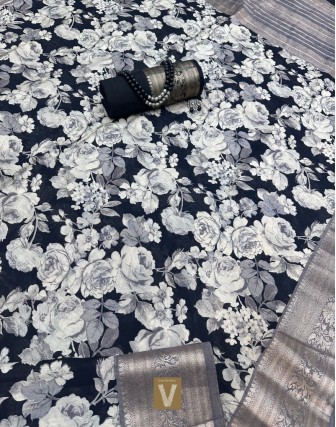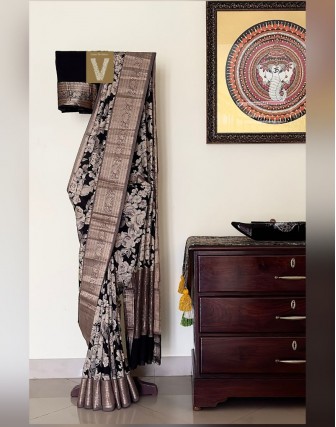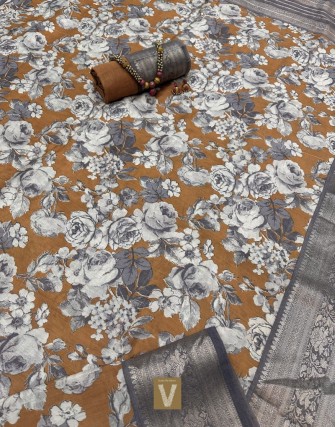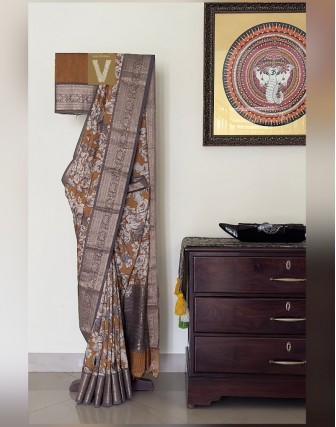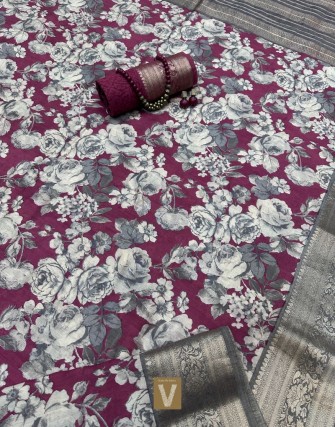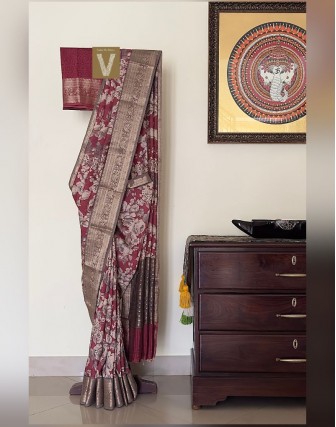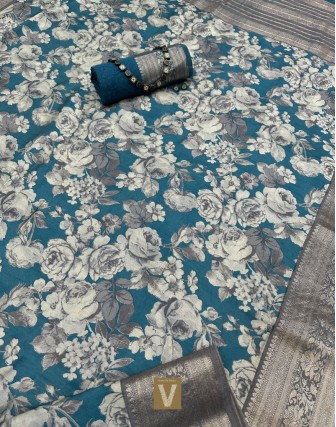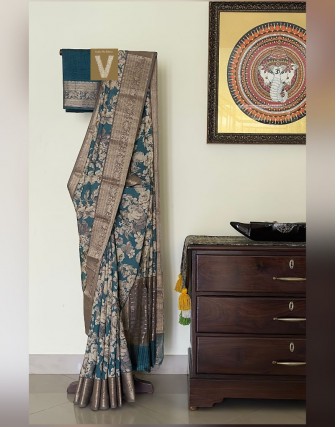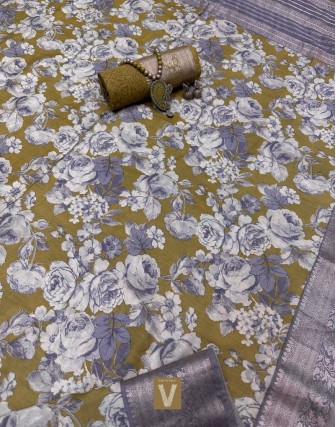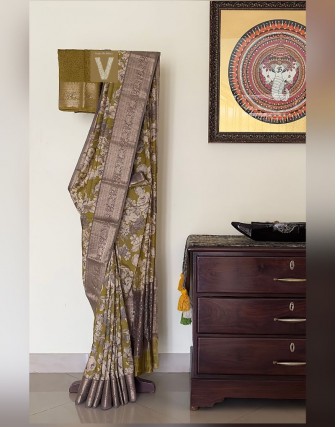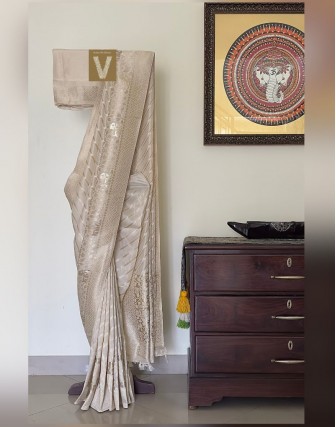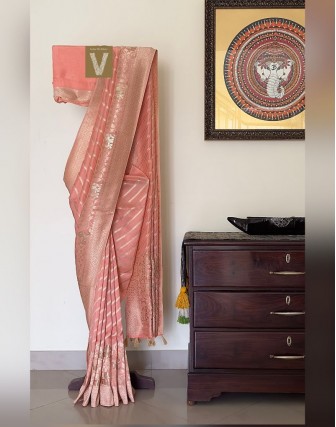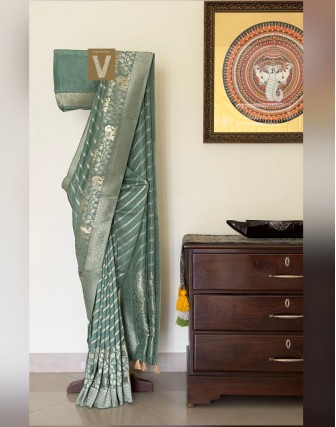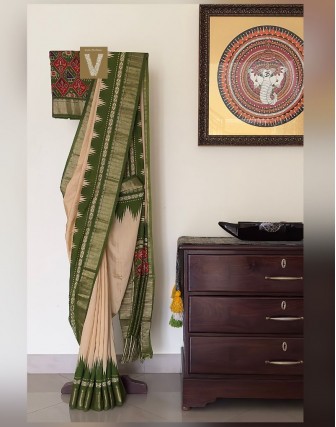Crepe Silks

Crêpe, or crepe, is a silk, wool, or synthetic fabric that has a distinctive wrinkled and bumpy appearance. Crepe comes from the French word, which means small, thin pancake. It is usually a lightweight to medium-weight fabric, but ultimately, crepe can be any weight.
Crepe yarn is made with a process called hard twisting, which involves twisting the textile fibers used in yarn manufacture much tighter than usual. Additionally, alternating “S” and “Z” twists are used to give the yarn its distinctive bouncy texture. Also known as right-hand and left-hand twists, these alternating spinning techniques result in crepe yarn no matter which fabric material is used.
Once the crepe yarn has been manufactured, it may be dyed, treated, and spun into garments. In some cases, the production of finished crepe products may occur at the same facility where the yarn is spun, but usually, the work is split between two separate firms.
Due to its delicate nature, crepe fabric is generally used in scarves, eveningwear, and other lightweight types of clothing. Wool crepe is more durable than silk crepe, which means that it can be used in more heavy-duty clothing applications like sweaters and dresses.
Synthetic crepe may be more durable in some ways, but remember that most synthetic fabrics are highly flammable while many natural fibers, especially wool, are flame-resistant. Crepe garments made from silk and wool are also far more likely to be comfortable, and remember that it’s even possible to make crepe from luxurious Alpaca wool and other ultra-soft wool varieties.
One of the most common applications of crepe fabric is in dresses. This fabric drapes nicely over other textiles, and it clings to the body in what is commonly thought of as an alluring and sensual way.
Everyday, ordinary dresses, however, usually don’t receive the crepe treatment. This fancy fabric is most commonly reserved for fashion photoshoots, weddings, galas, and other similarly high-class environments.
Munga Crepe Silk-VCRP-2481(SOLD)
₹2,850.00
Black munga crepe silk saree with beige floral prints all over.The border is grey with Jari weaves. the pally is grey with Jari stripes and the blouse is black with Jari ..
Munga Crepe Silk-VCRP-2482
₹2,850.00
Black munga crepe silk saree with beige floral prints all over.The border is grey with Jari weaves. the pally is grey with Jari stripes and the blouse is black with Jari ..
Munga Crepe Silk-VCRP-2483 (SOLD)
₹2,850.00
Jazzberry jam colour munga crepe silk saree with beige floral prints all over.The border is grey with Jari weaves. the pally is grey with Jari stripes and the blouse is b..
Munga Crepe Silk-VCRP-2484 (SOLD)
₹2,850.00
Deep turquoise blue colour munga crepe silk saree with beige floral prints all over.The border is grey with Jari weaves. the pally is grey with Jari stripes and the blous..
Munga Crepe Silk-VCRP-2485
₹2,850.00
Mehendi green colour munga crepe silk saree with beige floral prints all over.The border is grey with Jari weaves. the pally is grey with Jari stripes and the blouse is b..
Crepe Silk-VCRP-1833
₹7,999.00
This light beige crepe silk saree has meenakari jari diagonal stripes all over body. The pallu and border features floral and elephant meenakari jari. The blouse is plain..
Crepe Silk-VCRP-1835
₹7,999.00
This peach crepe silk saree has meenakari jari diagonal stripes all over body. The pallu and border features floral and elephant meenakari jari. The blouse is plain crepe..
Crepe Silk-VCRP-1837
₹7,999.00
This pastel green crepe silk saree has meenakari jari diagonal stripes all over body. The pallu and border features floral and elephant meenakari jari. The blouse is plai..
Munga Crepe Silk-VCRP-2455
₹2,450.00
This coconut beige munga crepe silk saree has green temple border. The pallu features stripes with patola prints . The blouse is munga crepe silk with patola prints.. ..

